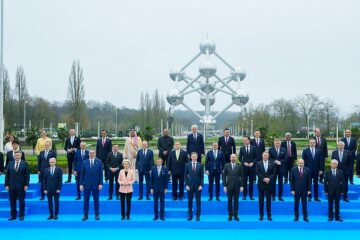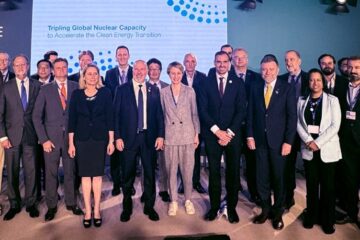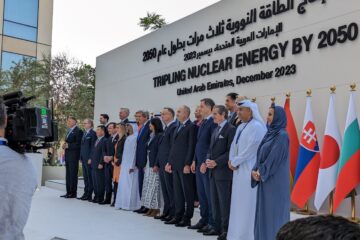Dr. Sylvia Fedoruk – A great innovator bringing the benefits of nuclear to the world.
I want to commend the Saskatchewan government for honouring Dr Sylvia Fedoruk by renaming the Canadian Centre for Nuclear Innovation located at the University of Saskatchewan the Sylvia Fedoruk Canadian Centre for Nuclear Innovation.
Dr. Fedoruk died on September 26 at the age of 85. When I thought about writing this post, I asked myself why would those who read this blog – who usually are from as many as 25 different countries want to read about Dr. Fedoruk? And the answer was simple. Probably not well known outside of Canada, you should all know her. She spent her life making the world a better place so I hope you will be as inspired by her as I am.
Dr. Syvia Fedoruk defined the word “innovation” when it came to bringing the benefits of radiation and nuclear to mankind. Born in the small town of Canora, Saskatchewan Dr. Fedoruk was the only woman who in the 1950s was conducting medical-physics research in Canada. At a time when it was unusual for a woman to enter the field of medical biophysics, her groundbreaking achievements have earned her worldwide recognition, bringing honour to the University of Saskatchewan, her home province, and Canada.
In 1951 she was one of the team that developed Cobalt 60 therapy to treat cancer. It is estimated that this work led to the treatment of some 70 million people worldwide by the end of the century. She later was involved in the development of the dosimeter as well as the first uses of radioisotopes to scan for cancer in the thyroid and liver.
After a long career as a researcher, Dr. Fedoruk was the first woman member of the Atomic Energy Control Board (predecessor of the CNSC, Canada’s nuclear regulator), became the Chancellor of the University of Saskatchewan bringing her drive for innovation to a new generation of young people and then served the people of Saskatchewan as its Lieutenant Governor from 1988 to 1994.
At a time when the nuclear industry is fighting to demonstrate the numerous benefits we bring to society; we must always remember those like Dr. Fedoruk who spent their lives using nuclear technology to save lives and made the world a truly better place for us all.
Today, the world still has many great young innovators but we are having trouble inspiring them to turn their passion to the nuclear industry like many did a generation ago. Rather it is a calling in IT or other industries that seem to be of most interest. Yet we all recognize the need for clean reliable economic energy for a better future. And we recognize that the latest developments in physics at the Large Hadron Collider which confirmed the existence of Higgs boson particles and the complementary experiments at the Sudbury Neutrino Observatory (SNO), recently revisited by Stephen Hawking have the potential to radically revise our understanding of the world. With these and other developments we need to reinvigorate the imagination of young people, be it in physics, nuclear medicine or electricity from nuclear power plants so that the world’s brightest students still come and spur innovation in the nuclear industry to ensure that we meet the needs of future generations.
So I ask you two questions when you comment on this post. First, who inspires you in the industry today? Let’s celebrate those (and there are many) who keep moving the nuclear industry forward. And second, what are your thoughts on inspiring a new generation of innovators to enter into this industry so that we continue to have the world’s best and brightest?





1 Comment
DV82XL · October 6, 2012 at 9:24 pm
I’m Canadian and my nuclear energy hero is George Laurence.
In the spring of 1940 having read about experiments in nuclear fission from others working in the field, Laurence built the first Canadian nuclear fission experiment in a room inside the grand NRC building at 100 Sussex Drive in the centre of Ottawa, near the Canadian Parliament Building.
It was only the impurities in his raw materials that prevented Laurence from becoming the first to create a sustained nuclear reaction two years before Chicago Pile-1 in the U.S. achieved criticality.
It is telling these stories of Canadian achievements in nuclear technology to our young people that needs to be part of any program to attract new employees into the industry. And let us be honest: the Canadian industry is starting to look like a geriatric ward – we need new blood and in a bad way.
Comments are closed.